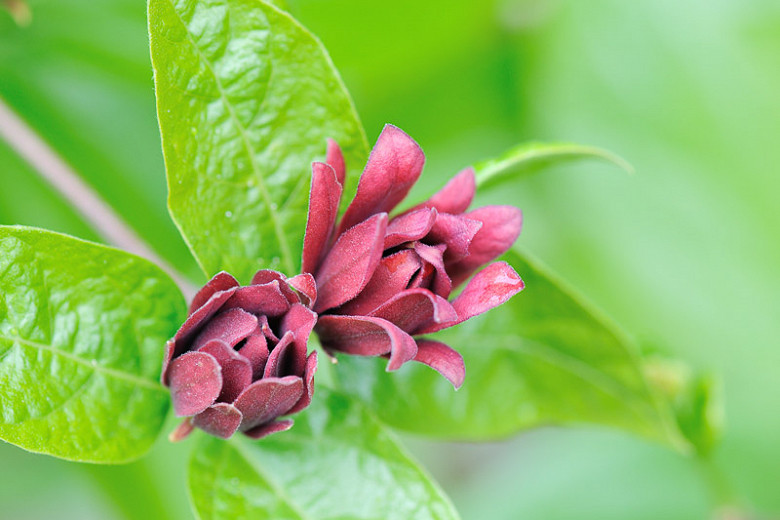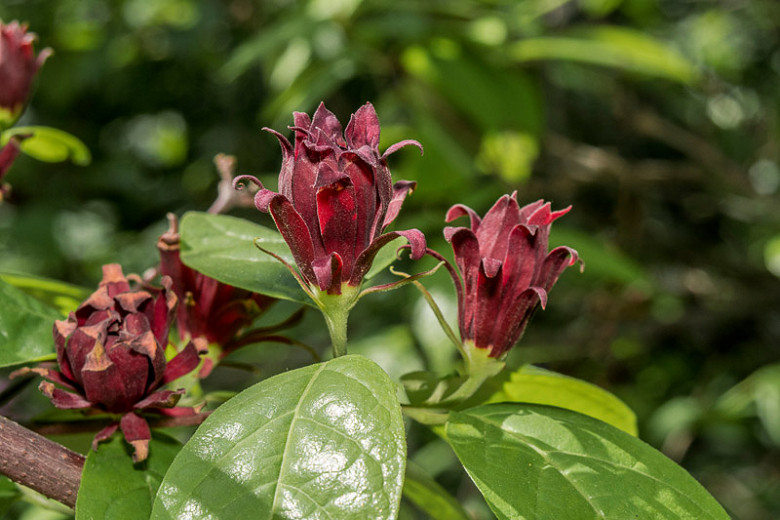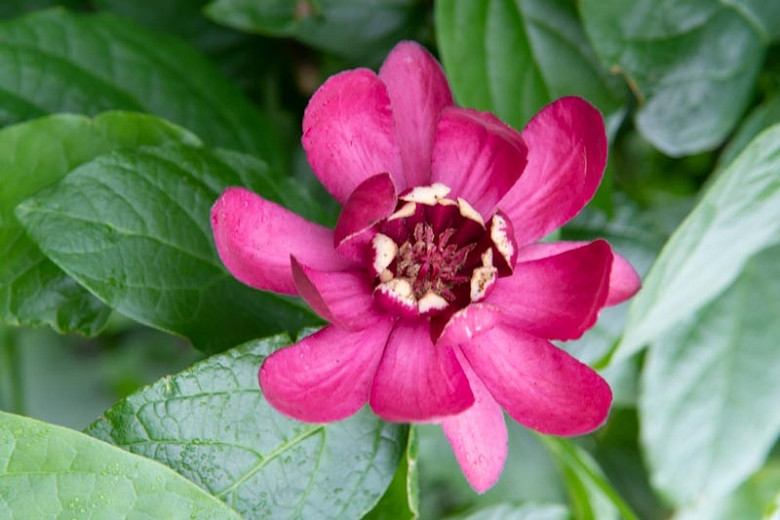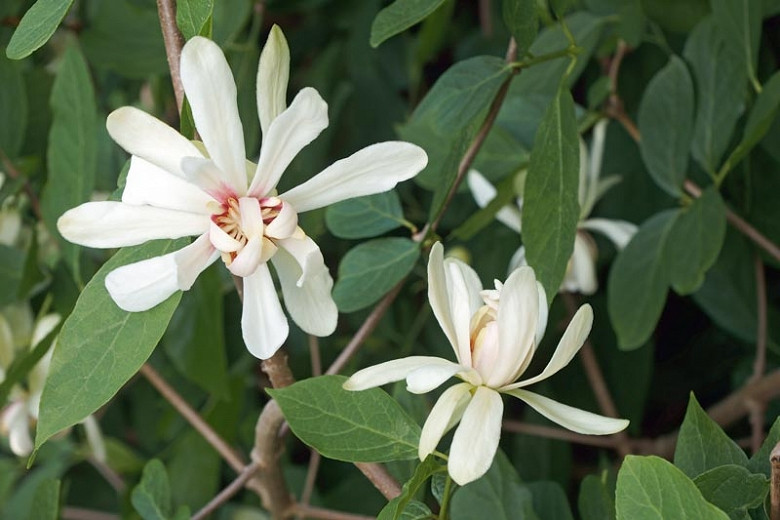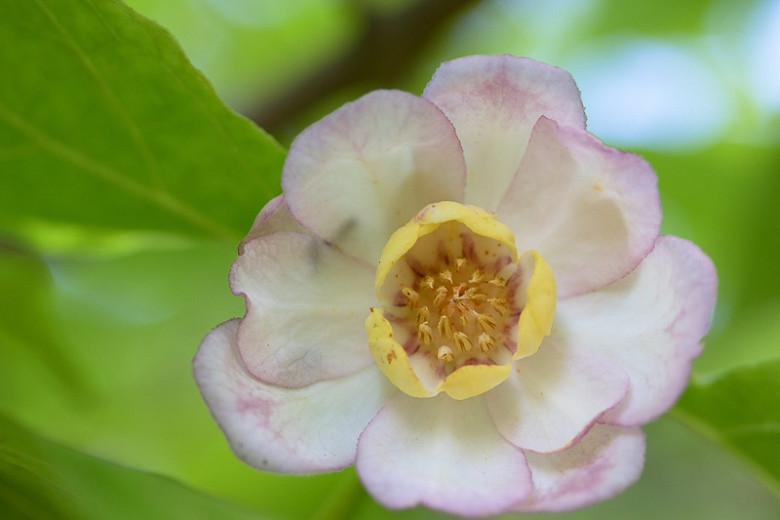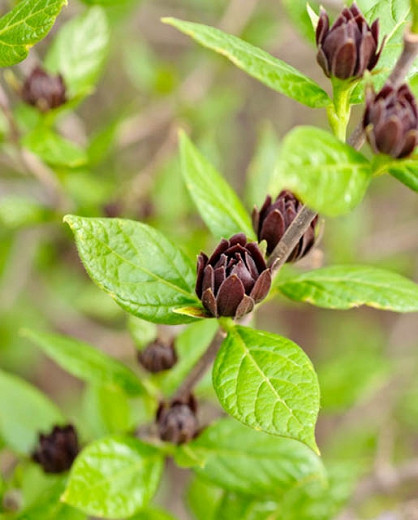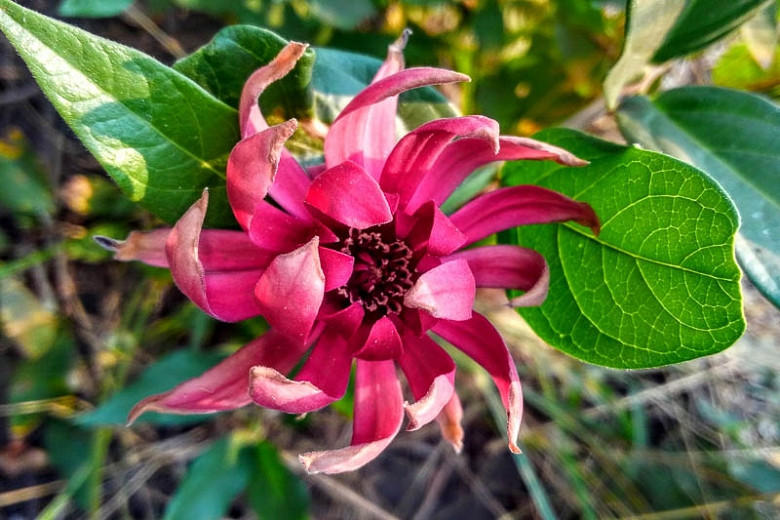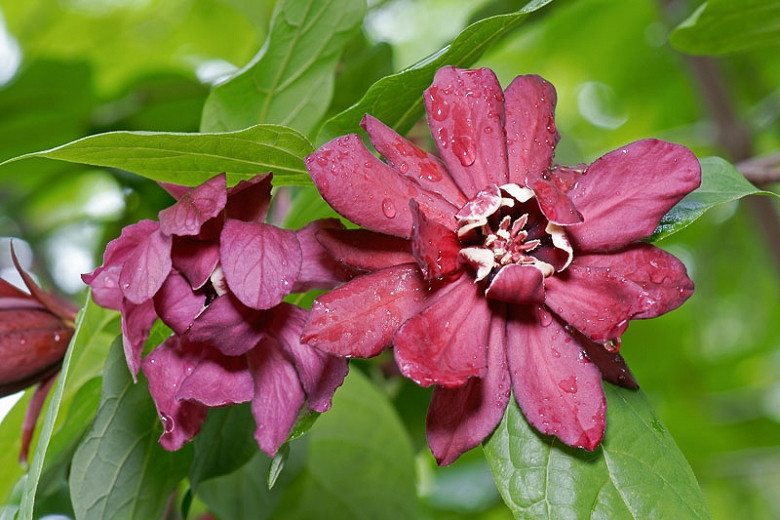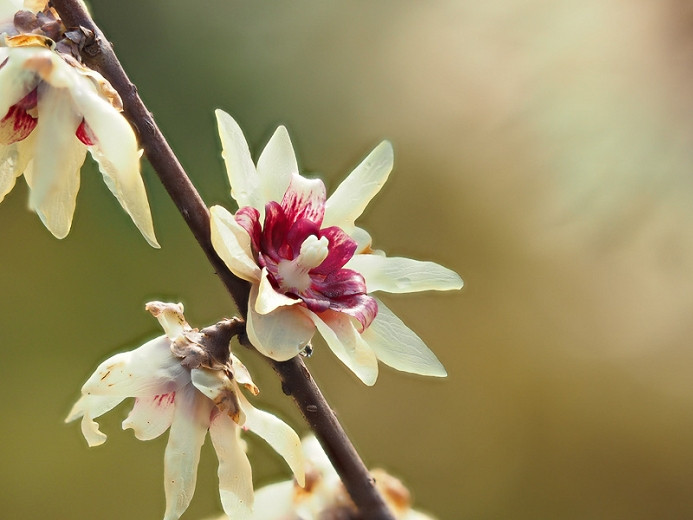Calycanthus floridus (Carolina Allspice)
Valued for the sweet, fruity fragrance of its flowers, Calycanthus floridus (Carolina Allspice) is a dense, rounded, well-branched deciduous shrub boasting a profusion of dark red flowers, 2 in. wide (5 cm), somewhat resembling magnolia blossoms, from mid-spring to mid-summer. Rich with a wonderful fragrance, a mix of melons, strawberries, pineapples, and bananas, the blossoms are produced in abundance at the ends of short branchlets. They give way to urn-shaped fruits which mature to brown in fall and persist throughout the winter. The shiny foliage of dark green oval leaves, with gracefully and elegantly pointed tips and lighter gray-green underside, consistently turns an attractive golden-yellow in fall. Carolina Allspice is very resistant to disease and insect problems. It has a prolific suckering habit, adapts to many soils, and grows taller in shaded places.
- Grows up to 6-10 ft. tall (180-300 cm) and 6-12 ft. wide (180-360 cm). Tends to spread by growing new shoots (suckers) along the outer edges of the clump.
- A full sun or part shade lover, this plant is best grown in average, medium moisture, well-drained soils. Tolerates a wide range of soils, including clay soils, but prefers rich loams. Tolerates deeper shade but will not grow as well or flower as heavily. It prefers some shade in hot summer afternoons. Plants grown in full sun will be shorter than those grown in part shade.
- Perfect as a specimen plant or in shrub borders, foundation plantings, woodlands, or naturalized areas. Plant it where you will be able to enjoy its perfume daily: near a doorway, along a path, near your patio or deck. Flowers are long-lasting on the shrub and also make good cut flowers. They can also be dried and added to potpourri.
- No serious insect or disease problems. Deer resistant!
- Prune after flowering to shape or maintain compactness. Remove root suckers promptly if naturalization is not desired.
- Propagate by seed.
- Native to the eastern United States.
Requirements
| Hardiness | 4 – 9 |
|---|---|
| Heat Zones | 1 – 9 |
| Climate Zones | 3, 3A, 3B, 4, 5, 6, 7, 8, 9, 14, 15, 16, 17 |
| Plant Type | Shrubs |
| Plant Family | Calycanthus – Sweetshrubs |
| Exposure | Full Sun, Partial Sun |
| Season of Interest | Spring (Mid,Late)Summer (Early,Mid,Late)Fall |
| Height | 6' – 10' (180cm – 3m) |
| Spread | 6' – 12' (180cm – 3.6m) |
| Spacing | 120″ – 144″ (300cm – 360cm) |
| Water Needs | Average |
| Maintenance | Low |
| Soil Type | Clay, Loam |
| Soil pH | Acid, Neutral |
| Soil Drainage | Moist but Well-Drained, Well-Drained |
| Characteristics | Dried Arrangements, Cut Flowers, Fragrant, Showy |
| Native Plants | United States, Midwest, Illinois, Ohio, Northeast, Connecticut, Delaware, Massachusetts, Maryland, Pennsylvania, Southeast, Alabama, Florida, Georgia, Kentucky, Louisiana, Mississippi, North Carolina, South Carolina, Tennessee, Virginia, West Virginia |
| Tolerance | Clay Soil, Deer, Wet Soil |
| Garden Uses | Beds and Borders |
| Garden Styles | Informal and Cottage, Prairie and Meadow |
